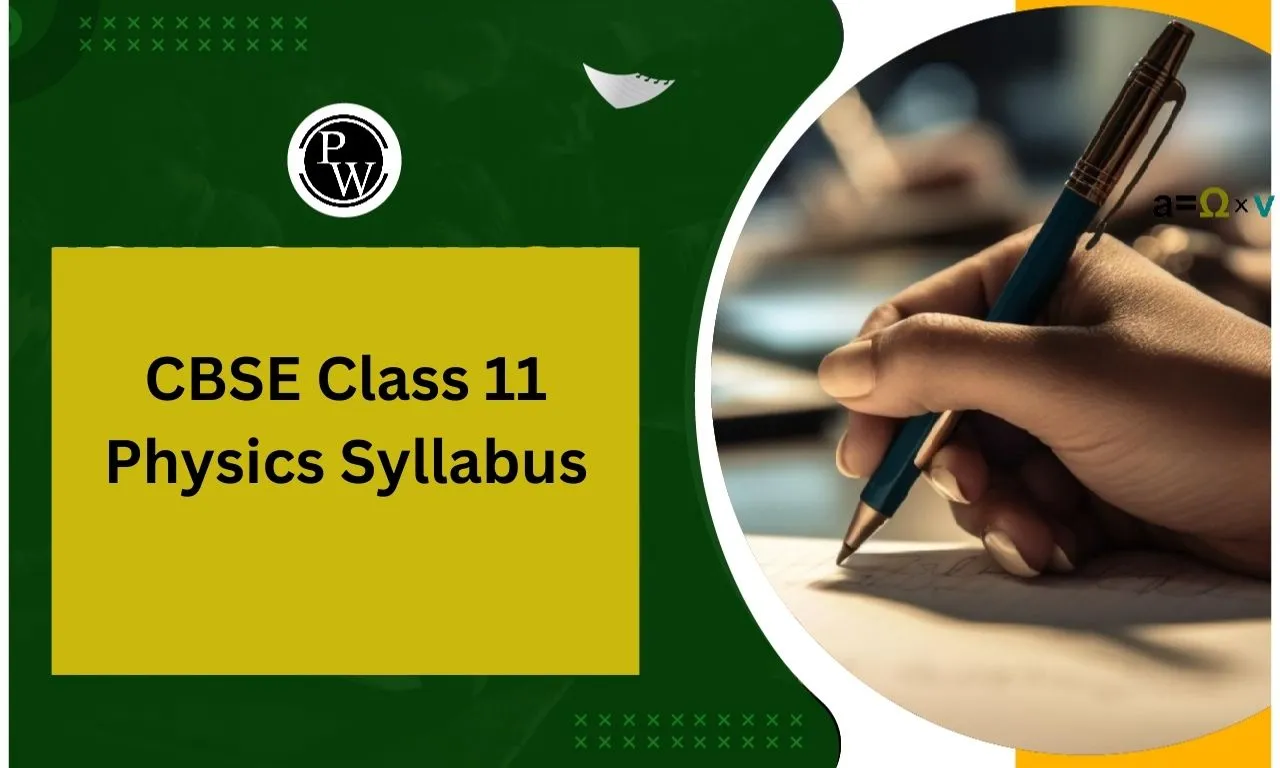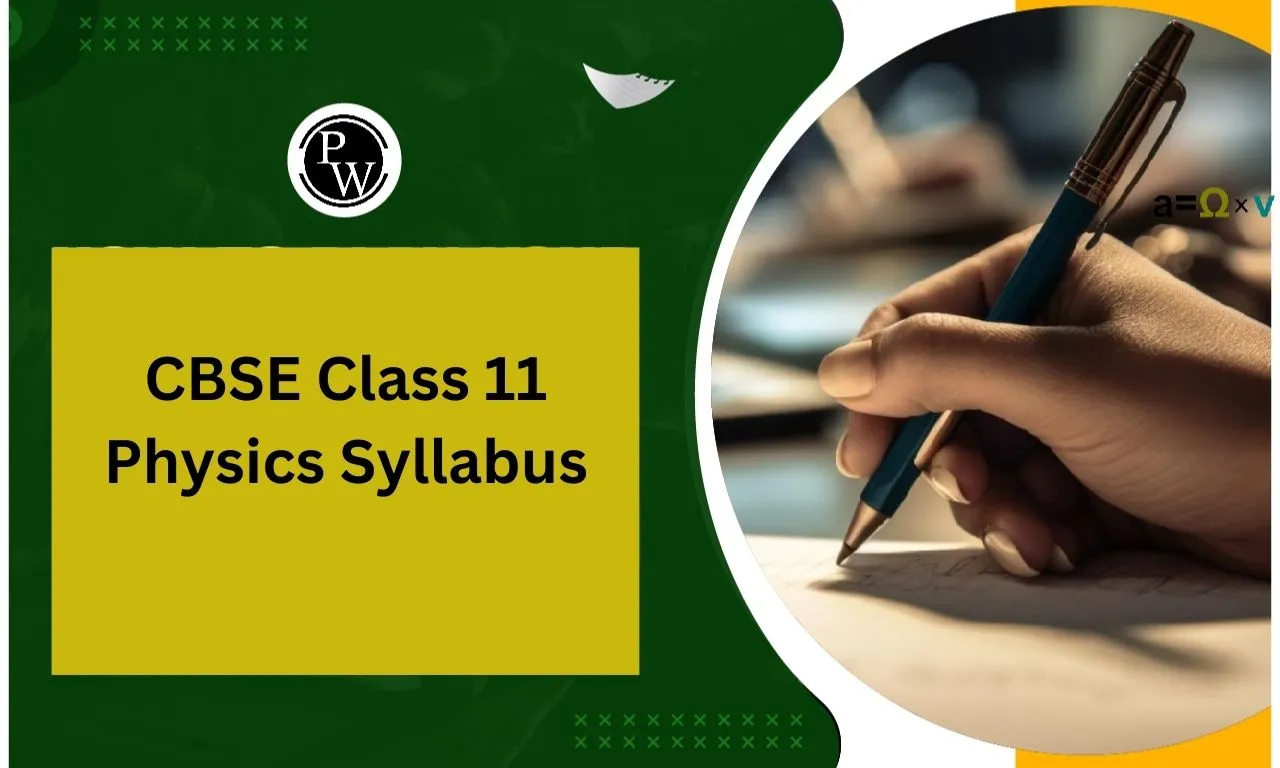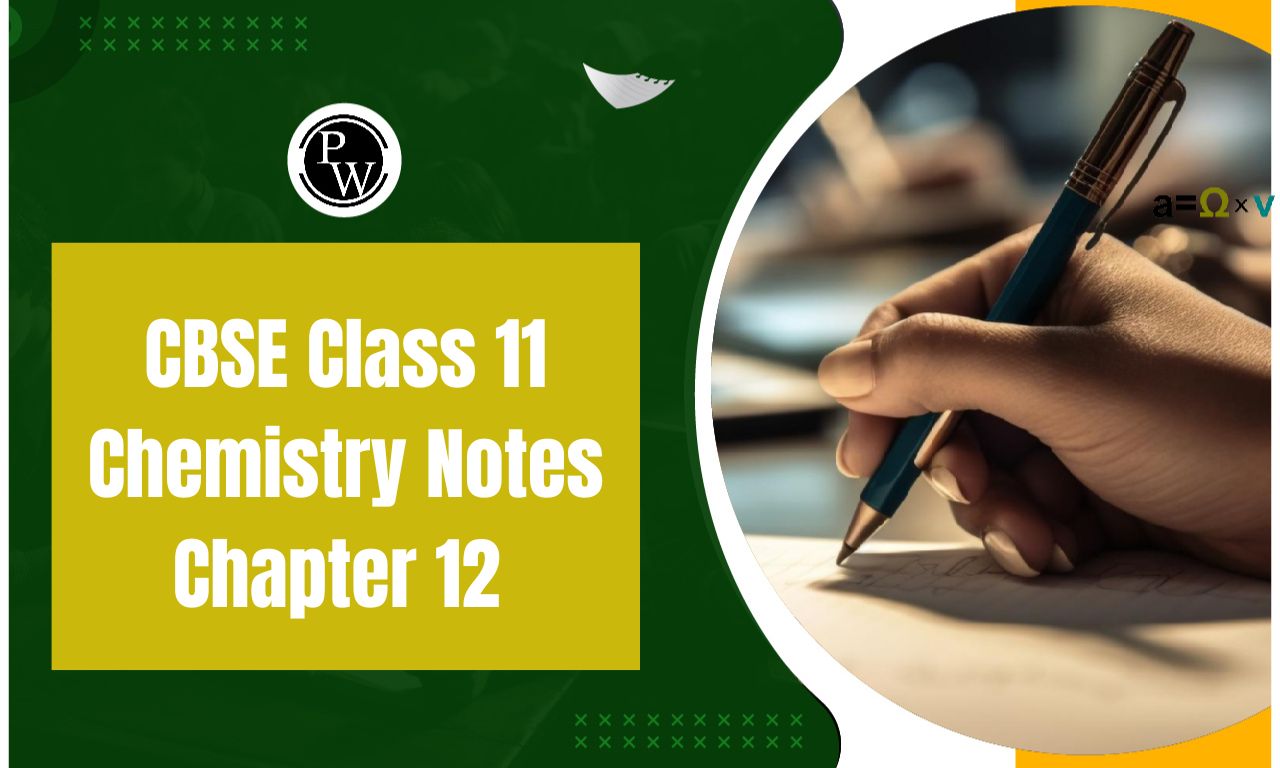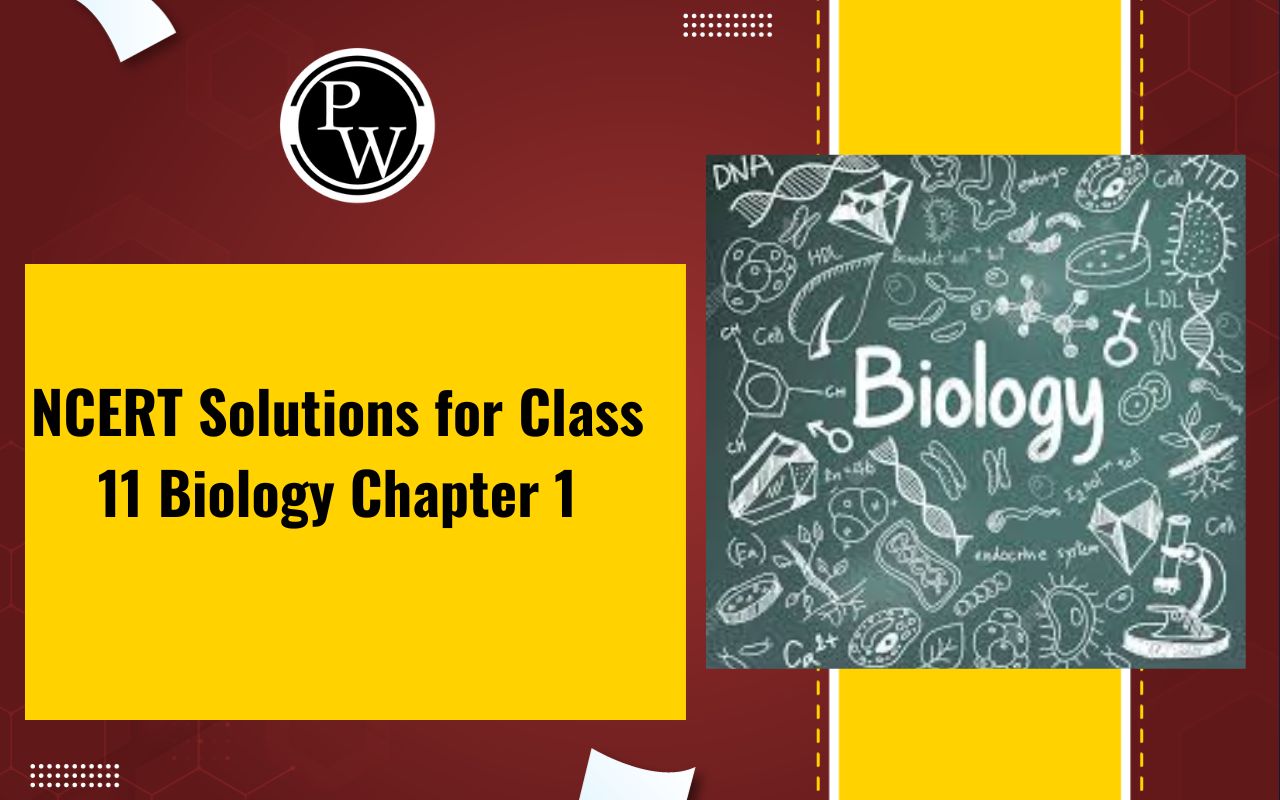

CBSE Class 11 Physics Syllabus 2025-26: The CBSE Class 11 Physics syllabus for the 2025-26 academic session encompasses fundamental concepts essential for building a strong foundation in physics.
It is structured into ten units, covering topics such as Physical World and Measurement, Kinematics, Laws of Motion, Work, Energy and Power, Motion of System of Particles and Rigid Body, Gravitation, Properties of Bulk Matter, Thermodynamics, Behaviour of Perfect Gases and Kinetic Theory of Gases, and Oscillations and Waves.
The theoretical component carries 70 marks, while practical assessments contribute 30 marks, culminating in a total of 100 marks.
CBSE Class 11 Physics Syllabus 2025-26 Overview
The CBSE Class 11 syllabus 2025-26 academic session encompasses ten fundamental units essential for building a strong foundation in physics.
The theoretical component carries 70 marks, while practical assessments contribute 30 marks, culminating in a total of 100 marks. Mastery of these topics is crucial for understanding advanced concepts in higher classes and for performing well in competitive examinations.
CBSE Class 11 Physics Syllabus 2025-26
The CBSE Class 11 Physics Syllabus is broken into two sections which comprise a theoretical portion of 70 Marks and the rest 30 marks for practicals. In this post, we thoroughly reviewed the CBSE Class 11 Physics Syllabus.This curriculum is very important to the students preparing for competitive examinations like IIT-JEE, NEET examinations, etc and questions are prepared by referring to the class 11 syllabus too.
Often students consider physics one of the hardest topics among all others yet if prepared effectively, they may score highly.
|
CBSE Class 11 Physics Syllabus 2025-26 |
||
| Units | Name of the Units | Marks |
| Unit–I | Physical World and Measurement | 23 |
| Chapter–2: Units and Measurements | ||
| Unit–II | Kinematics | |
| Chapter–3: Motion in a Straight Line | ||
| Chapter–4: Motion in a Plane | ||
| Unit–III | Laws of Motion | |
| Chapter–5: Laws of Motion | ||
| Unit–IV | Work, Energy, and Power | 17 |
| Chapter–6: Work, Energy, and Power | ||
| Unit–V | The motion of the System of Particles and Rigid Body | |
| Chapter–7: System of Particles and Rotational Motion | ||
| Unit-VI | Gravitation | |
| Chapter–8: Gravitation | ||
| Unit–VII | Properties of Bulk Matter | 20 |
| Chapter–9: Mechanical Properties of Solids | ||
| Chapter 10: Mechanical Properties of Fluids | ||
| Chapter 11: Thermal Properties of Matter | ||
| Unit–VIII | Thermodynamics | |
| Chapter–12: Thermodynamics | ||
| Unit–IX | The behaviour of Perfect Gases and the Kinetic Theory of Gases | |
| Chapter–13: Kinetic Theory | ||
| Unit–X | Oscillations and Waves | 10 |
| Chapter–14: Oscillations | ||
| Chapter–15: Waves | ||
CBSE Class 11 Physics Syllabus 2025-26 (Chapter-wise)
The full and chapter-wise CBSE Class 11 Physics Syllabus has been provided here. There are 10 units and 14 chapters in all that are taught in the CBSE Class 11 Physics Syllabus and students must learn them all considerably before the examinations to have plenty of time for revisions.CBSE Class 11 Chemistry Syllabus
Students must study the chapters very thoroughly and clarify their thoughts as it would enable them to comprehend the curriculum of class 12 easily.|
CBSE Class 11 Physics Syllabus (Chapter-wise) |
||
| Unit | Name | Description |
| 1 | Physical World and Measurement | Chapter–2: Units and Measurements Need for measurement: Units of measurement; systems of units; SI units, fundamental and derived units. significant figures. Dimensions of physical quantities, dimensional analysis and its applications. |
| 2 | Kinematics | Chapter–3: Motion in a Straight Line The frame of reference, Motion in a straight line, Elementary concepts of differentiation and integration for describing motion, uniform and nonuniform motion, instantaneous velocity, uniformly accelerated motion, velocity-time and position-time graphs. Relations for uniformly accelerated motion (graphical treatment). Chapter–4: Motion in a Plane Scalar and vector quantities; position and displacement vectors, general vectors and their notations; equality of vectors, multiplication of vectors by a real number; addition and subtraction of vectors, Unit vector; resolution of a vector in a plane, rectangular components, Scalar and Vector product of vectors. Motion in a plane, cases of uniform velocity and uniform acceleration, projectile motion, and uniform circular motion. |
| 3 | Laws of Motion | Chapter–5: Laws of Motion Intuitive concept of force, Inertia, Newton’s first law of motion; momentum and Newton’s second law of motion; impulse; Newton’s third law of motion. Law of conservation of linear momentum and its applications. Equilibrium of concurrent forces, Static and kinetic friction, laws of friction, rolling friction, lubrication. Dynamics of uniform circular motion: Centripetal force, examples of circular motion (vehicle on a level circular road, vehicle on a banked road). |
| 4 | Work, Energy and Power | Chapter–6: Work, Energy and Power Work done by a constant force and a variable force; kinetic energy, work-energy theorem, power. The notion of potential energy, the potential energy of a spring, conservative forces: non-conservative forces, motion in a vertical circle; elastic and inelastic collisions in one and two dimensions. |
| 5 | The motion of the System of Particles and Rigid Body | Chapter–7: System of Particles and Rotational Motion Centre of mass of a two-particle system, momentum conservation and Centre of mass motion. Centre of mass of a rigid body; centre of mass of a uniform rod. Moment of a force, torque, angular momentum, law of conservation of angular momentum and its applications. Equilibrium of rigid bodies, rigid body rotation and equations of rotational motion, comparison of linear and rotational motions. Moment of inertia, radius of gyration, values of moments of inertia for simple geometrical objects (no derivation). |
| 6 | Gravitation | Chapter–8: Gravitation Kepler’s laws of planetary motion, the universal law of gravitation. Acceleration due to gravity and its variation with altitude and depth. Gravitational potential energy and gravitational potential, escape speed, orbital velocity of a satellite. |
| 7 | Properties of Bulk Matter | Chapter–9: Mechanical Properties of Solids Elasticity, Stress-strain relationship, Hooke’s law, Young’s modulus, bulk modulus, shear modulus of rigidity (qualitative idea only), Poisson’s ratio; elastic energy. Chapter 10: Mechanical Properties of Fluids Pressure due to a fluid column; Pascal’s law and its applications (hydraulic lift and hydraulic brakes), the effect of gravity on fluid pressure. Viscosity, Stokes’ law, terminal velocity, streamline and turbulent flow, critical velocity, Bernoulli’s theorem and its simple applications. Surface energy and surface tension, angle of contact, excess of pressure across a curved surface, application of surface tension ideas to drops, bubbles and capillary rise. Chapter 11: Thermal Properties of Matter Heat, temperature, thermal expansion; thermal expansion of solids, liquids and gases, anomalous expansion of water; specific heat capacity; Cp, Cv – calorimetry; change of state – latent heat capacity. Heat transfer-conduction, convection and radiation, thermal conductivity, qualitative ideas of Blackbody radiation, Wein’s displacement Law, and Stefan’s law. |
| 8 | Thermodynamics | Chapter–12: Thermodynamics Thermal equilibrium and definition of temperature, zeroth law of thermodynamics, heat, work and internal energy. The first law of thermodynamics, The second law of thermodynamics: gaseous state of matter, change of condition of gaseous state -isothermal, adiabatic, reversible, irreversible, and cyclic processes. |
| 9 | Behaviour of Perfect Gases and Kinetic Theory of Gases | Chapter–13: Kinetic Theory Equation of state of a perfect gas, work done in compressing a gas. Kinetic theory of gases – assumptions, the concept of pressure. Kinetic interpretation of temperature; rms speed of gas molecules; degrees of freedom, law of equipartition of energy (statement only) and application to specific heat capacities of gases; concept of mean free path, Avogadro’s number. |
| 10 | Oscillations and Waves | Chapter–14: Oscillations Periodic motion – period, frequency, displacement as a function of time, periodic functions and their applications. Simple harmonic motion (S.H.M) and its equations of motion; phase; oscillations of a loaded spring- restoring force and force constant; energy in S.H.M. Kinetic and potential energies; simple pendulum derivation of expression for its period. Chapter–15: Waves Wave motion: Transverse and longitudinal waves, speed of travelling wave, displacement relation for a progressive wave, principle of superposition of waves, reflection of waves, standing waves in strings and organ pipes, fundamental mode and harmonics, Beats. |
CBSE Class 11 Physics Syllabus 2025-26 For Practicals
The CBSE Class 11 Physics Evaluation scheme consists of Two experiments one from each section with 7 marks each, a Practical record (experiment and activities) carrying 5 marks, One activity from any section of 3 marks, an Investigatory Project of 3 marks and a Viva on experiments, activities, and project of 5 marks.CBSE Class 11 Accountancy Syllabus
The practical activity carries 30 points and will be granted to the students by analysing both practical activities and viva.|
Class 11th Physics Practical Evaluation Scheme |
|
| Topic | Marks |
| Two experiments one from each section | 7+7 marks |
| Practical record (experiment and activities) | 5 marks |
| One activity from any section | 3 marks |
| Investigatory Project | 3 marks |
| Viva on experiments, activities, and project | 5 marks |
| Total | 30 Marks |
Section A
|
CBSE Class 11 Physics Syllabus Experiments |
| 1. To measure the diameter of a small spherical/cylindrical body and to measure the internal diameter and depth of a given beaker/calorimeter using Vernier Callipers and hence find its volume. |
| 2. To measure the diameter of a given wire and thickness of a given sheet using a screw gauge. |
| 3. To determine the volume of an irregular lamina using a screw gauge. |
| 4. To determine the radius of curvature of a given spherical surface by a spherometer. |
| 5. To determine the mass of two different objects using a beam balance. |
| 6. To find the weight of a given body using the parallelogram law of vectors. |
| 7. Using a simple pendulum, plot its L-T2 graph and use it to find the effective length of the second pendulum. |
| 8. To study the variation of a period of a simple pendulum of a given length by taking bobs of the same size but different masses and interpreting the result. |
| 9. T o study the relationship between the force of limiting friction and normal reaction and to find the coefficient of friction between a block and a horizontal surface. |
| 10. To find the downward force, along an inclined plane, acting on a roller due to the gravitational pull of the earth and study its relationship with the angle of inclination θ by plotting a graph between force and Sinθ. |
Activities
|
CBSE Class 11 Physics Syllabus Activities |
| 1. To make a paper scale of given least count, e.g., 0.2cm, 0.5 cm. |
| 2. To determine the mass of a given body using a meter scale by the principle of moments. |
| 3. To plot a graph for a given set of data, with proper choice of scales and error bars. |
| 4. To measure the force of limiting friction for rolling a roller on a horizontal plane. |
| 5. To study the variation in the range of a projectile with an angle of projection. |
| 6. To study the conservation of energy of a ball rolling down on an inclined plane (using a double inclined plane). |
| 7. To study the dissipation of energy of a simple pendulum by plotting a graph between the square of amplitude and time. |
Section B
|
CBSE Class 11 Physics Syllabus Experiments |
| 1. To determine Young's modulus of elasticity of the material of a given wire |
| 2. To find the force constant of a helical spring by plotting a graph between load and extension. |
| 3. To study the variation in volume with pressure for a sample of air at constant temperature by plotting graphs between P and V, and between P and 1/V. |
| 4. T o determine the surface tension of water by capillary rise method. |
| 5. To determine the coefficient of viscosity of a given viscous liquid by measuring the terminal velocity of a given spherical body. |
| 6. T o study the relationship between the temperature of a hot body and time by plotting a cooling curve. |
| 7. To determine the specific heat capacity of a given solid by the method of mixtures. |
| 8. Study the relation between the frequency and length of a given wire under constant tension using a sonometer. |
| 9. To study the relation between the length of a given wire and tension for constant frequency using a sonometer. |
| 10. To find the speed of sound in air at room temperature using a resonance tube by two resonance positions. |
CBSE Class 11 Physics Syllabus 2025-26 Activities
The CBSE Class 11 Physics syllabus for the 2025-26 academic session includes various practical activities designed to enhance students' understanding of physical concepts.
These activities are integral to the curriculum and contribute to the overall assessment. For a detailed list of these activities, please refer to the information provided below.
|
CBSE Class 11 Physics Syllabus 2025-26 Activities |
| 1. To observe the change of state and plot a cooling curve for molten wax. |
| 2. To observe and explain the effect of heating on a bi-metallic strip. |
| 3. To note the change in the level of liquid in a container on heating and interpret the observations. |
| 4. To study the effect of detergent on the surface tension of water by observing capillary rise. |
| 5. To study the factors affecting the rate of loss of heat of a liquid. |
| 6. To study the effect of load on depression of a suitably clamped meter scale loaded at (i) its end and (ii) in the middle. |
| 7. To observe the decrease in pressure with an increase in the velocity of a fluid. |
CBSE Class 11 Physics Syllabus 2025-26 PDF Download
The CBSE Class 11 Physics syllabus for the academic year 2025-26 outlines the curriculum, including theoretical concepts and practical activities, designed to build a strong foundation in physics.
For comprehensive details, including unit-wise topics and assessment criteria, please refer to the official syllabus document provided below.
Do you need help with your homework or preparing for exams?
Study without using the internet
CBSE Class 11 Physics Syllabus Deleted Syllabus
Get here for a comprehensive look at the eliminated Physics subjects from the current CBSE Class 11 Physics Syllabus -
|
CBSE Class 11 Physics Syllabus Deleted Syllabus |
||
| Chapter Name | Deleted Topics | Added Topics |
| Chapter 1: Physical World | Complete Chapter | - |
| Chapter 2: Units and Measurements | Length, mass and time measurements; accuracy and precision of measuring instruments; errors in measurement | - |
| Chapter 3: Motion in a Straight Line | Position-time graph, speed and velocity. Average Speed. | - |
| Chapter 4: Motion in a Plane | Relative Velocity, Acceleration Projectile | - |
| Chapter 5: Laws of Motion | - | - |
| Chapter 6: Work, Energy and Power | conservation of mechanical energy (kinetic and potential energies) | - |
| Chapter 7: System of Particles and Rotational Motion | Statement of parallel and perpendicular axes theorems and their applications. | - |
| Chapter 8: Gravitation | Geostationary satellites, | |
The National Council of Educational Research and Training has issued the list of rationalised curricula for CBSE Class 7 to 12. Check the list of rationalised material for all the topics. From that massive and comprehensive list, we have extracted the facts for you to complete your purpose to come on this website. Check below the list of all the subjects omitted from the Class 11 CBSE Physics NCERT textbook.
| Chapters | Topics Deleted |
| Chapter 1: Physical World | 1.1 What is Physics? 1.2 Scope and Excitement of Physics 1.3 Physics, Technology and Society 1.4 Fundamental Forces in Nature 1.5 Nature of Physical Laws |
| Chapter 2: Units and Measurements | 2.3 Measurement of Length 2.4 Measurement of Mass 2.5 Measurement of Time 2.6 Accuracy and precision of Instruments and Errors in Measurement Exercises 2.13, 2.14, 2.19–2.22, 2.24–2.33 |
| Chapter 3: Motion in a Straight Line | 3.2 Position, Path Length and Displacement 3.3 Average Velocity and Average Speed 3.7 Relative Velocity Exercises 3.5, 3.7–3.9 and 3.23–3.28 Appendix 3.1 |
| Chapter 4: Motion in a Plane | 4.9 Relative Velocity in Two Dimensions Exercises 4.12–4.14; 4.26–4.32 |
| Chapter 5: Laws of Motion | Exercises 5.24–5.40 |
| Chapter 6: Work, Energy and Power | 6.10 Various Forms of Energy: the Law of Conservation of Energy Exercises 6.24–6.29 |
| Chapter 7: System of Particles and Rotational Motion | 7.10 Theorems of Perpendicular and Parallel Axes 7.14 Rolling Motion Exercises 7.10, 7.18–7.19, 7.21–7.33 |
| Chapter 8: Gravitation | 8.11 Geostationary and Polar Satellites 8.12 Weightlessness Exercises 8.3–8.5, 8.22–8.25 Appendix 8.1 |
| Chapter 9: Mechanical Properties of Solids | 9.2 Elastic Behaviour of Solids 9.6.2 Determination of Young’s Modulus of the Material of a Wire Exercises 9.17 – 9.21 |
| Chapter 10: Mechanical Properties of Fluids | 10.4.2 Venturi-meter 10.4.3 Blood Flow and Heart Attack 10.6.6 Detergents and Surface Tension Exercises 10.21–10.31 Appendix 10.1 |
| Chapter 11: Thermal Properties of Matter | 11.9.5 Greenhouse Effect Exercises 11.21 – 11.22 |
| Chapter 12: Thermodynamics | 12.9 Heat Engines 12.10 Refrigerators and Heat Pumps Exercises 12.7 and 12.10 |
| Chapter 13: Kinetic Theory | 13.6.5 Specific Heat Capacity of Water Exercises 13.11–13.14 |
| Chapter 14: Oscillations | 14.9 Damped Simple Harmonic Motion 14.10 Forced Oscillations and Resonance Exercises 14.16 (p. 365), 14.20–14.25 |
| Chapter 15: Waves | 15.8 Doppler Effect Exercises 15.20–15.27 |
| Answers | Following the reduction in Exercises in text. |
Features of NCERT CBSE Class 11 Physics Syllabus 2025-26
Below, we have highlighted a few elements of the CBSE Class 11 Physics Syllabus 2025-26.
- The CBSE Class 11 Physics Syllabus emphasises on creating a conceptual knowledge of issues in students.
- The CBSE Class 11 Physics Syllabus gives a logical arrangement of the “Units” and ideas so that students may readily link the subjects.
- The usage of SI Units, Symbols and the nomenclature of physical quantities and formulations in the Physics curriculum is as per worldwide standards.
- The CBSE Class 11 Physics Syllabus supports the applications of Physics topics in real-life situations so that Physics study may be made more relevant and enjoyable for students.
Preparation Tips for CBSE Class 11 Physics Syllabus 2025-26
Here are some effective preparation tips for the CBSE Class 11 Physics Syllabus 2025-26:
-
Understand the Concepts: Focus on understanding the logic behind formulas and laws rather than memorizing them.
-
Refer to NCERT First: NCERT textbooks are the base—read them thoroughly before using reference books.
-
Make Notes: Prepare short notes with key formulas, definitions, and laws for quick revision.
-
Practice Numericals Daily: Physics requires regular practice of numerical problems from each chapter.
-
Solve Previous Year Questions: This helps in understanding exam patterns and important topics.
-
Revise Regularly: Schedule weekly revisions to retain concepts for the long term.
-
Focus on Diagrams: Practice drawing labeled diagrams neatly—they often fetch easy marks.
CBSE Class 11 Physics Syllabus FAQs
Has CBSE released syllabus Class 11?
Is Class 11 physics difficult?
Which stream is best for class 11?
What happens if you fail in 11th Physics?
Is biology easier than physics?













